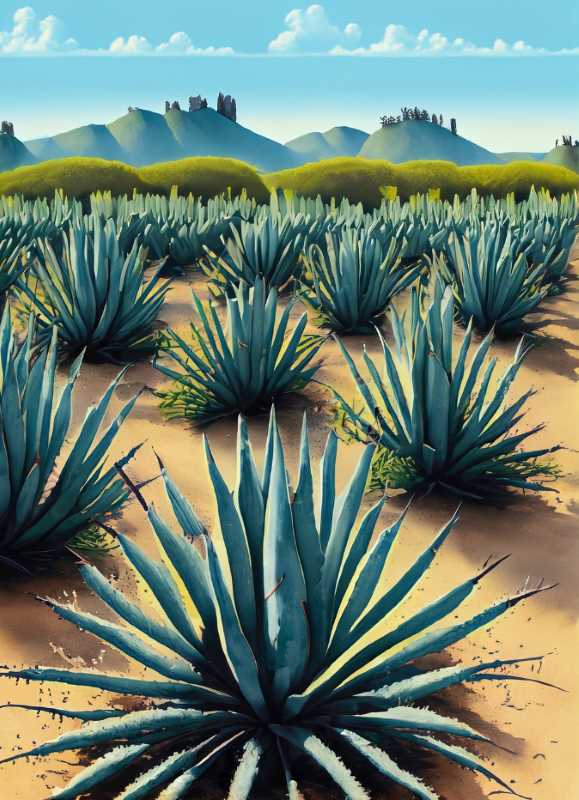How Bats are Stirring Up the Tequila's Genetic Diversity
UNAM's study unveils a game-changing strategy: Let Agave tequilana flower and seed to bolster its defense against diseases. Bats, nature's unsuspecting allies, journey vast distances, pollinating agaves, and emphasizing the irreplaceable power of biodiversity.

In a groundbreaking revelation from UNAM's study, a promising strategy to enhance the genetic resilience of the Agave tequilana (A. tequilana) has been discovered. By simply allowing these plants to flower, seed, and regenerate, there emerges a line of agave more adept at fending off diseases – an especially crucial attribute in an era characterized by the unpredictable consequences of climate change.
Rodrigo Antonio Medellín Legorreta and Luis Enrique Eguiarte Fruns, esteemed researchers at UNAM's Institute of Ecology (IE), elaborate that genetic diversity acts as a lifeline for species, furnishing them with the requisite adaptability to ever-evolving environmental circumstances. As Medellín Legorreta succinctly puts it, within a span of one to three generations, agaves can recapture their genetic diversity, with bats playing a pivotal role in the process. These nocturnal creatures, capable of traversing 100 kilometers from their roosting sites, inadvertently pollinate agaves along their nightly routes.
But there's a catch. While wild agaves teem with genetic diversity, the commercial cultivation practices for A. tequilana Weber var. azul have severely diminished its genetic spectrum. International Tequila Day, observed on July 24, commemorates UNESCO's 2006 recognition of the Agave landscapes and Tequila's old industrial edifices in Jalisco as cultural heritage. Notably, in 2020, Mexico produced 1,519,000 tons of tequila agave, of which Jalisco accounted for a whopping 74.3%. However, this agricultural success has its shadow: vast tracts of cloned blue agave fields susceptible to pathogens.
Eguiarte Fruns highlights the inherent danger in this monoculture. The rampant cloning has left entire plantations vulnerable to bacterial and fungal invasions. A disease outbreak could lead to substantial economic losses.
Interestingly, Medellín Legorreta, as early as 1994, endeavored to apprise the Tequila Regulatory Council of the symbiotic relationship bats and agaves share. It was only after a disease outbreak in 2011, that he, along with David Suro's assistance, successfully engaged with leading producers. The pitch was simple: By allowing just 5% of agaves to bloom, not only would it foster genetic diversity but also sustain local bat populations. The outcome was a win-win. 2016 witnessed the launch of 300,000 bottles of 'bat-friendly tequilas', celebrating both biodiversity and sustainability.
Eguiarte Fruns and his team delved deeper, employing the advanced Genotyping by Sequencing (GBS) technique to compare the genetic diversity of bat-friendly tequilas with other samples. The findings confirmed the inherent value of the bat-friendly initiative. The goal of producing genetically diverse agaves was indeed being achieved, though there remains a long way to go before they match the genetic richness of wild agaves.
However, the saga of A. tequilana doesn't end here. Over the past decade, the price per kilogram of agave has skyrocketed from a mere 30 cents to 30 pesos. This inflation poses a challenge, especially for small to medium-sized tequila enterprises, as they grapple with balancing rising costs and product pricing.

In summary, the future of A. tequilana and, by extension, tequila hinges on striking a balance between tradition and innovation. Embracing strategies that amplify genetic diversity while concurrently adapting to market realities will be instrumental in securing the legacy of this cherished Mexican treasure.




